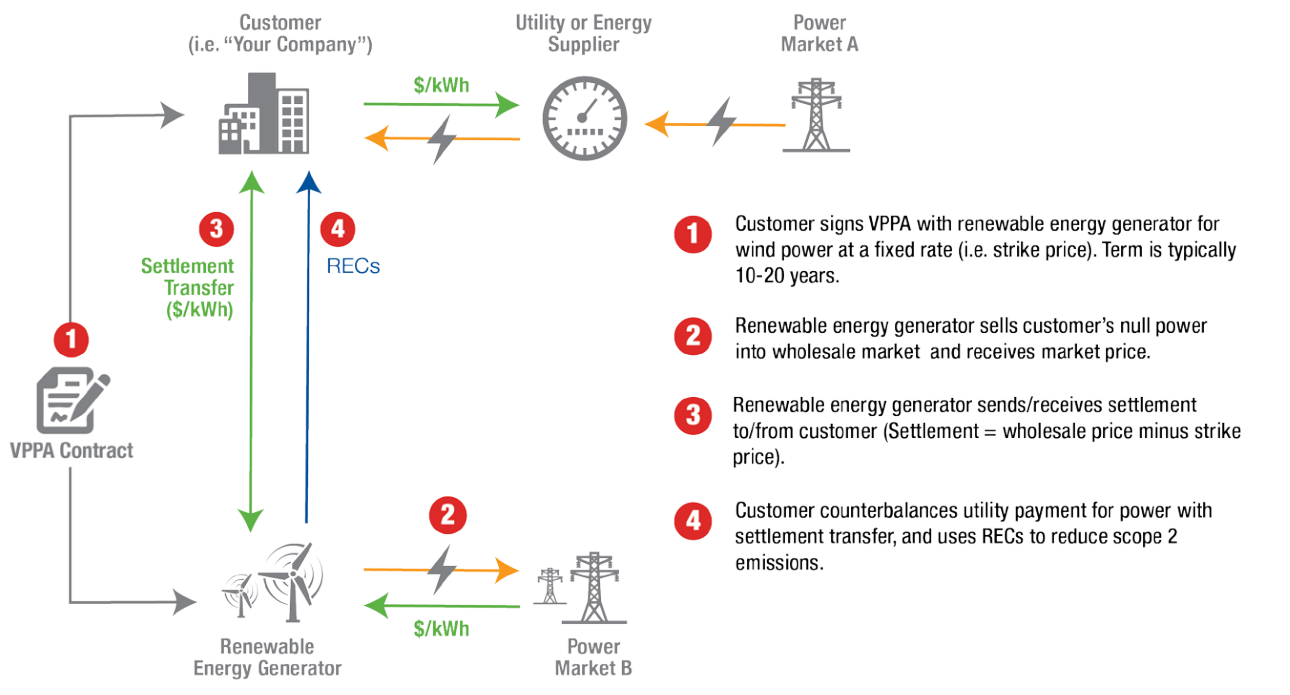A Power Purchase Agreement (PPA) is a long-term contract between an energy provider and a company that agrees to buy a certain amount of energy at a predetermined price over the course of the agreement.
PPAs are generally a precondition for new energy development because, in order to get funding, providers need to show that they will be able to sell the new energy they create. Since new developments require so many resources, providers need to take lots of debt. PPAs help ensure solid financials and connect providers with immediate customers. Large corporations can sometimes have enough demand to enter a PPA alone, but multiple companies can sign smaller deals with the same provider to meet their needs, too.
Before signing a PPA, companies usually perform an Energy Needs Assessment that calculates current energy use and forecasts future needs. This helps them ensure they are not paying for more than they need or not getting enough. PPAs are a critical part of the green energy transition because new renewable installations are subject to the same financing requirements and need to show that they will generate enough revenue to pay off their debt. This means that companies can play an active role in helping to build out green energy infrastructure by entering a PPA either alone or with other partners. In May 2024, Microsoft agreed to the largest ever PPA to purchase 10.5 gigawatts of energy from new renewable installations constructed by their partner, Brookfield. Operating at maximum capacity, these new installations would provide enough energy to power over 800,000 homes. Of course, Microsoft demands more energy than almost any other single company, so their needs are very different from most.
Smaller enterprises can use the same intervention, too, at a more appropriate scale. There are two major categories of PPA that smaller enterprises may be interested in. Some companies may elect to build renewables on-site which makes transmission simpler, but may limit the amount of energy they can construct. Others may choose to purchase energy from an off-site installation that may be more powerful, but also requires additional steps to connect the workplace. A Virtual PPA (VPPA), wherein a company purchases credits known as Renewable Energy Certificates, is a good option for companies that may be unable to directly receive energy from renewable sources. In a VPPA, a provider generates as much energy as the customer demands, sells it to their local grid at market price, and then transfers Renewable Energy Certificates to the customer so they can verify how much renewable energy was generated on their behalf.
Cycle of payments in a Power Purchase Agreement.

Diagram of Virtual Power Purchase Agreement (Source)
VPPAs can be an effective offset program assuming the customer helps finance renewable energy projects that otherwise would not have been built.
PPAs are becoming more popular as more companies adopt climate action plans. Between 2015-2023, the amount of energy contracted through PPAs has increased nearly ten-fold – from 4.5 GW in 2015 to 46 GW in 2023. The US remains the largest market for PPAs, but in 2023, it represented less than half of total contracted PPA energy for the first time (20.9 GW). This is due in large part to a major year-over-year increase in Europe which nearly doubled its PPA volume from 8.8 GW in 2022 to 15.4 GW in 2023. Likewise, Asian countries have rapidly adopted PPAs, growing their share from 2.2 GW in 2021 to 9.7 GW in 2023. Existing PPAs around the world currently account for nearly 200 GW over their life-cycles – equivalent to the annual electricity generation of the eight highest producing states.[1] If harnessed properly, PPAs can be a critical tool of private climate governance for industry to materially support the expansion of green energy domestically and globally.
[1] TX, FL, PA, CA, IL, AL, NC, OH
